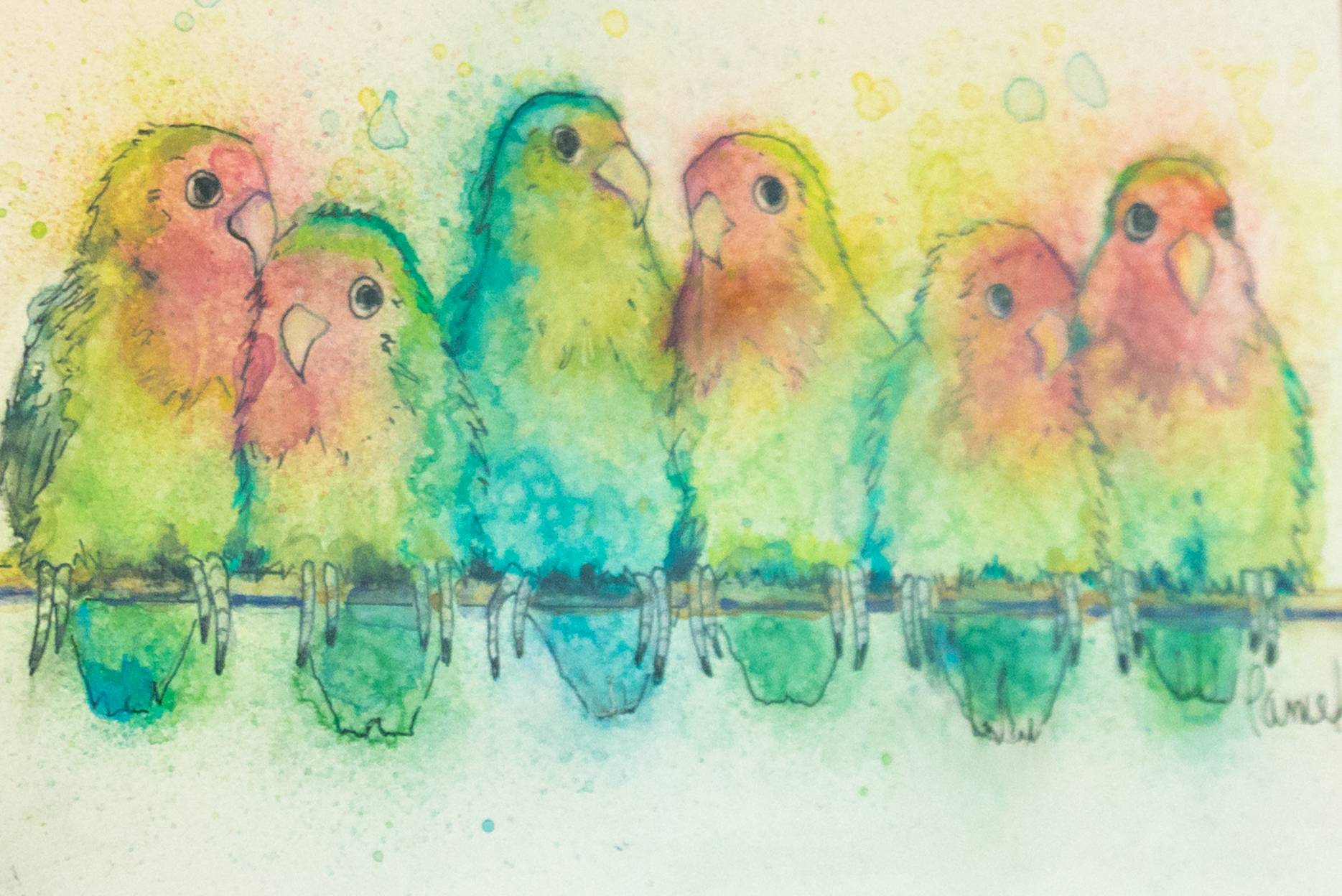A few weeks ago, when I covered the first Market at the Square, I happened upon the Pamek Artwork booth and met artist Pamela Ek. I captured her photograph, and she and her work captured my curiosity. I wanted to know more about her, and she gave me that opportunity.
If I could describe Pamela in one word it would be resilient. Read on to find out why.
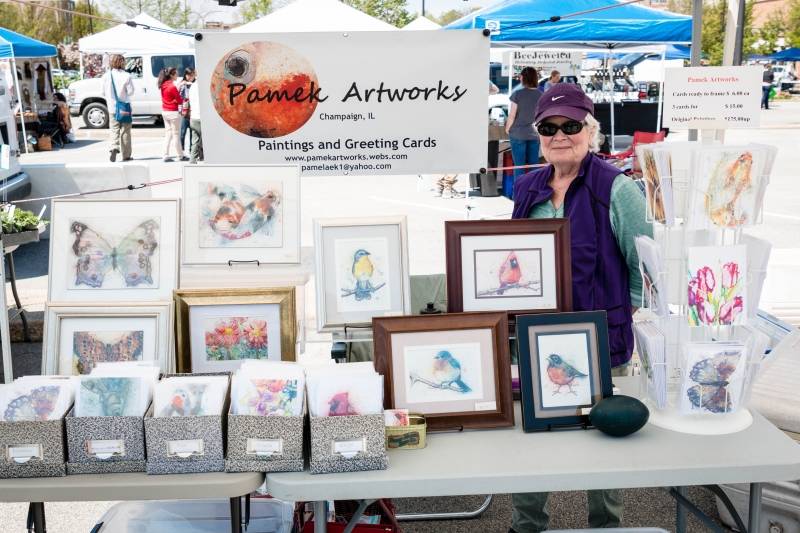
Ek won her first art contest when she was 10 years old. She had entered into a News-Gazette contest and took home a prize. “My parents weren’t the ones who really encouraged me to pursue a career of art,” she said. “It was my high school art teacher, Fred Addaberry, who really helped me decide to pursue the arts.”
Ek went to high school at Champaign Senior High. From there she went to the University of Illinois and graduated with a degree in painting and drawing. I asked her what it was like to be an art student in the 60s. “We painted all of the time. That’s all we wanted to do,” she said.
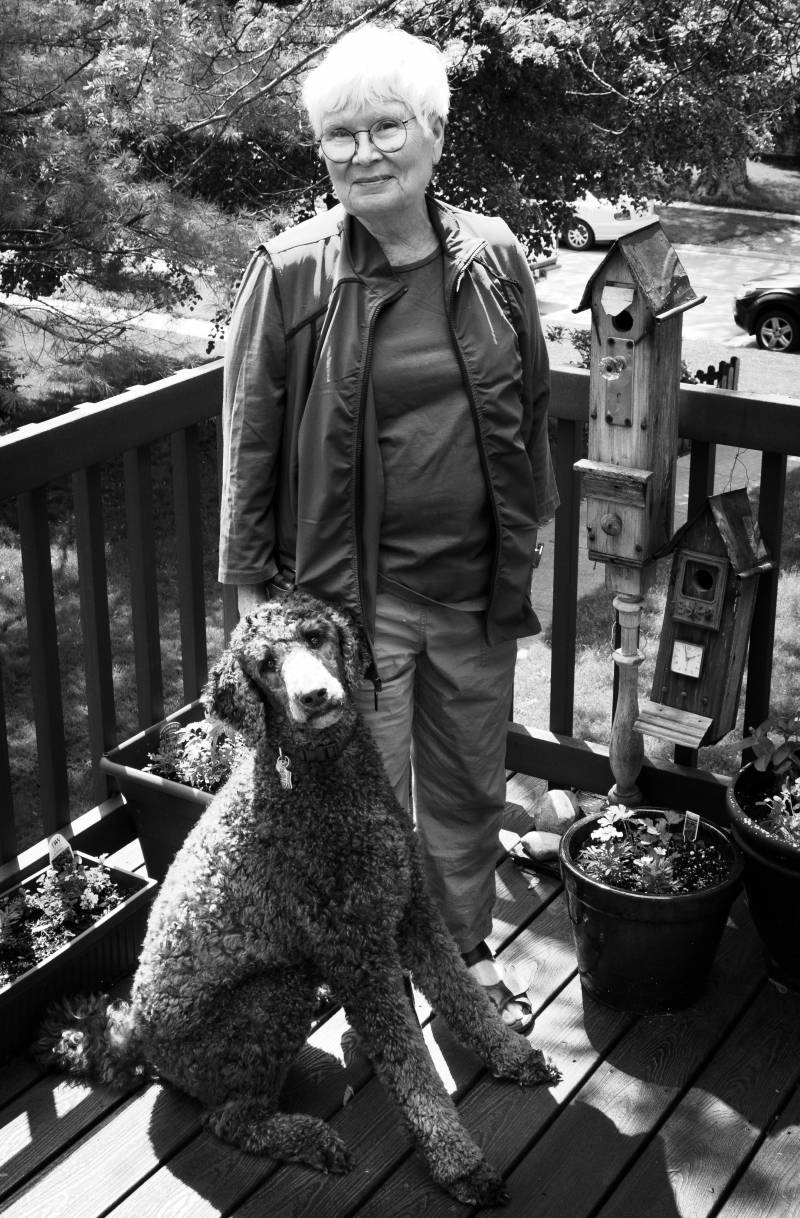
After school Ek became a military wife and, out of necessity, moved from state to state for many years. “I’ve lived in 13 different places. I would recommend travel to everyone. It influenced my art because you get different people, food, scenery, even the light is different in other parts of the country,” she said.
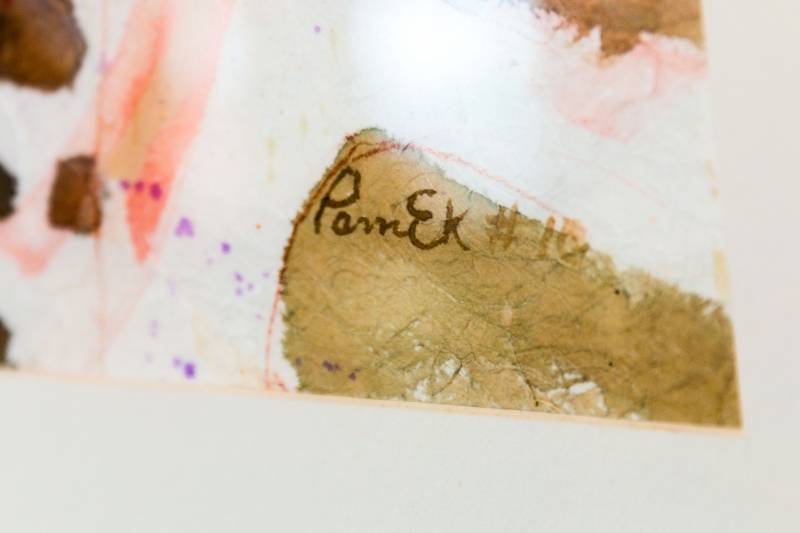
In her career as an artist, Ek started with portraits. “I bought my first car [with money] from a portrait I had painted of a family. It was Triumph TR3,” she told me. She then moved on to “figures,” which she explained to me to be paintings of people, but not of a particular person. Now she does individual butterflies, fish, and birds.
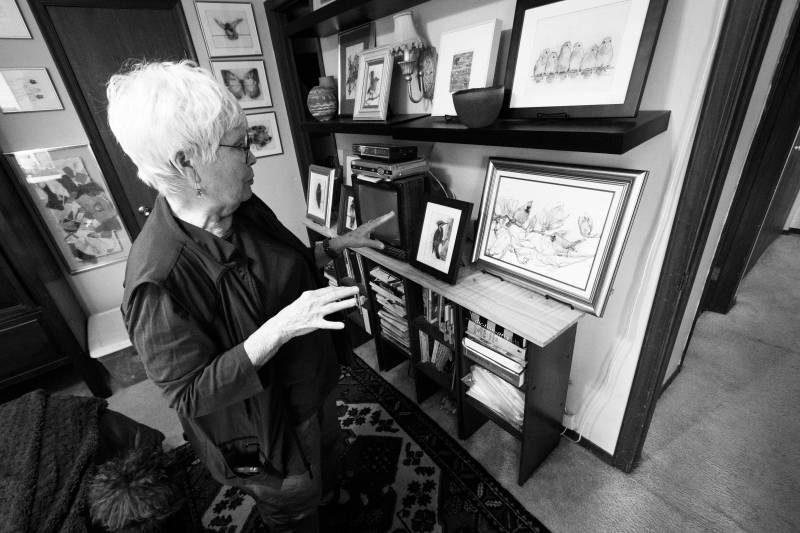
When I first met Pamela at the market, I was drawn to her watercolor fish. It remains my favorite of her pieces. I really like how the watercolor parellels the water in which fish live. It feels like they’re splashing color onto the canvas, but yet she keeps the image sharp with the pen.
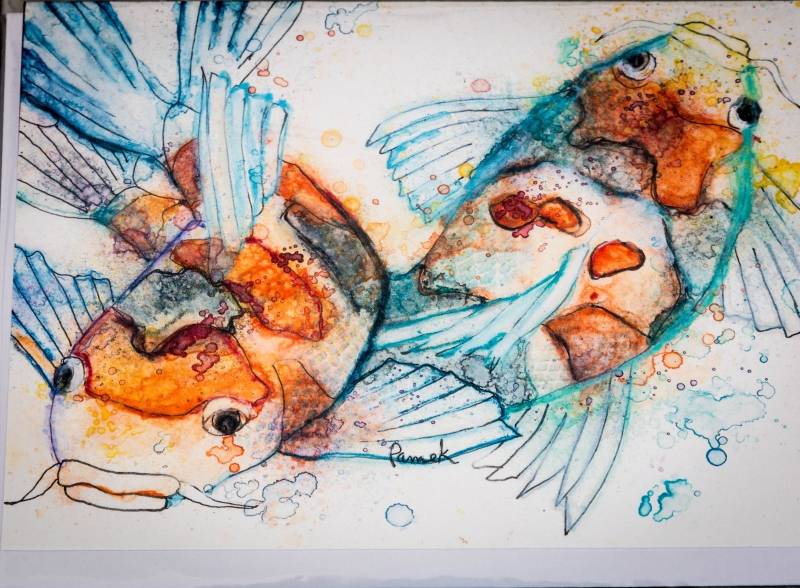
Through the years Ek has also changed mediums. “I’ve done oils, acrylics, print making, etc. It keeps your art fresh to switch things up. But I’ve always used an impressionistic style” she said.
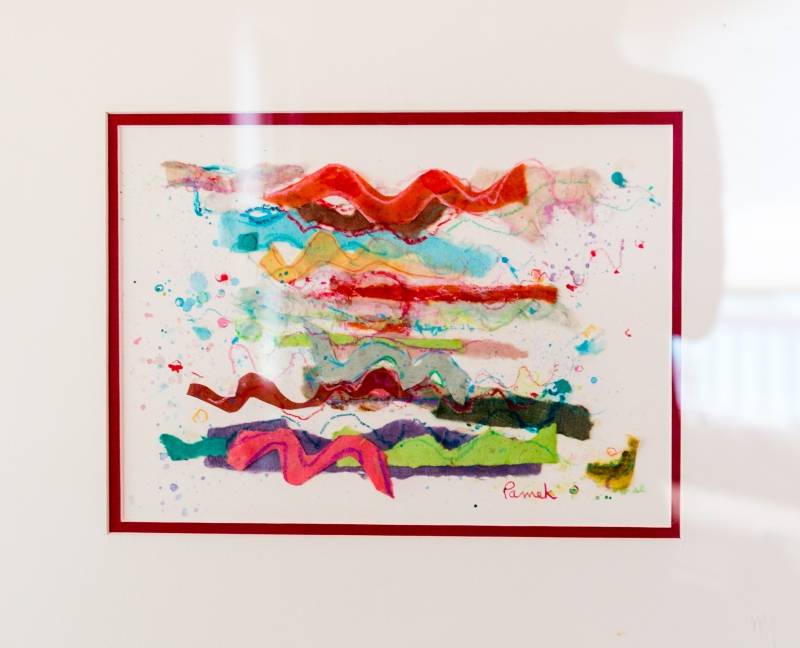
Print making. Hmm. To me, that always meant printing off a copy of a piece of art. But Ek explained to me that print making involves metal sheets, etching with acid, presses, and plates. “It requires you to be very precise, and it takes a lot of patience,” she remarked.
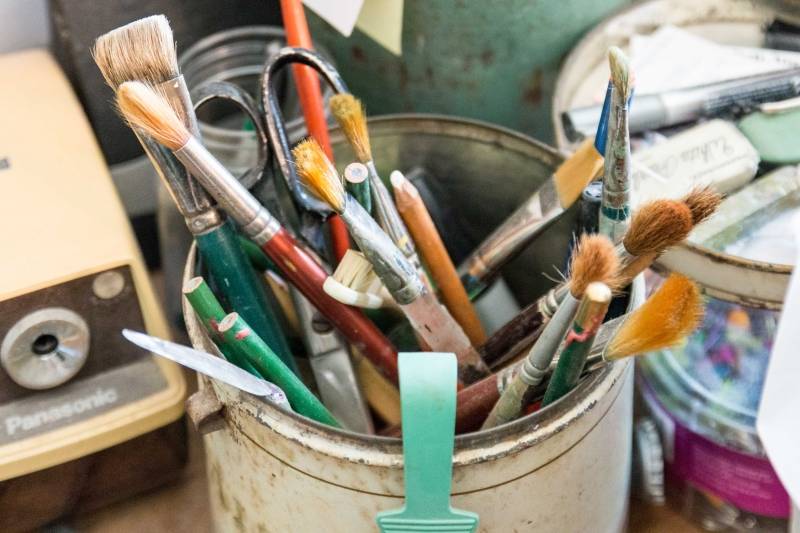
Below is what is called a mono print — meaning there is only one of them. She made it with plexiglass and watercolor. “Usually you label prints with numbers,” she explained. “Originals have no numbering. This one doesn’t have a number either, because there is only one.”
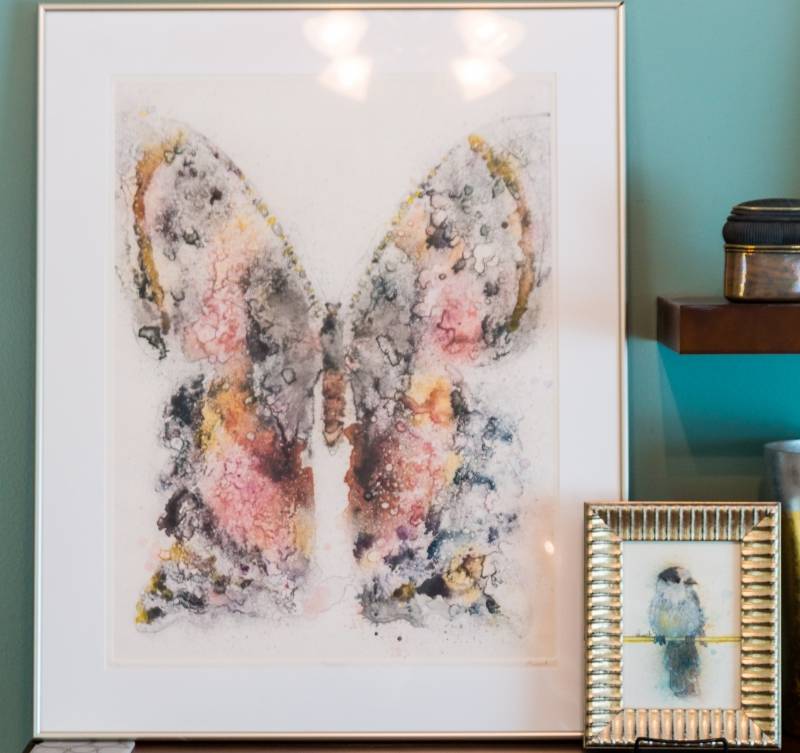
Right now she is painting birds. She likes them because they’ve got a lot of character. She says she likes to read about their shapes, sizes, colors, and flight patterns. “Once you paint a bird, you really know about it!” she told me.
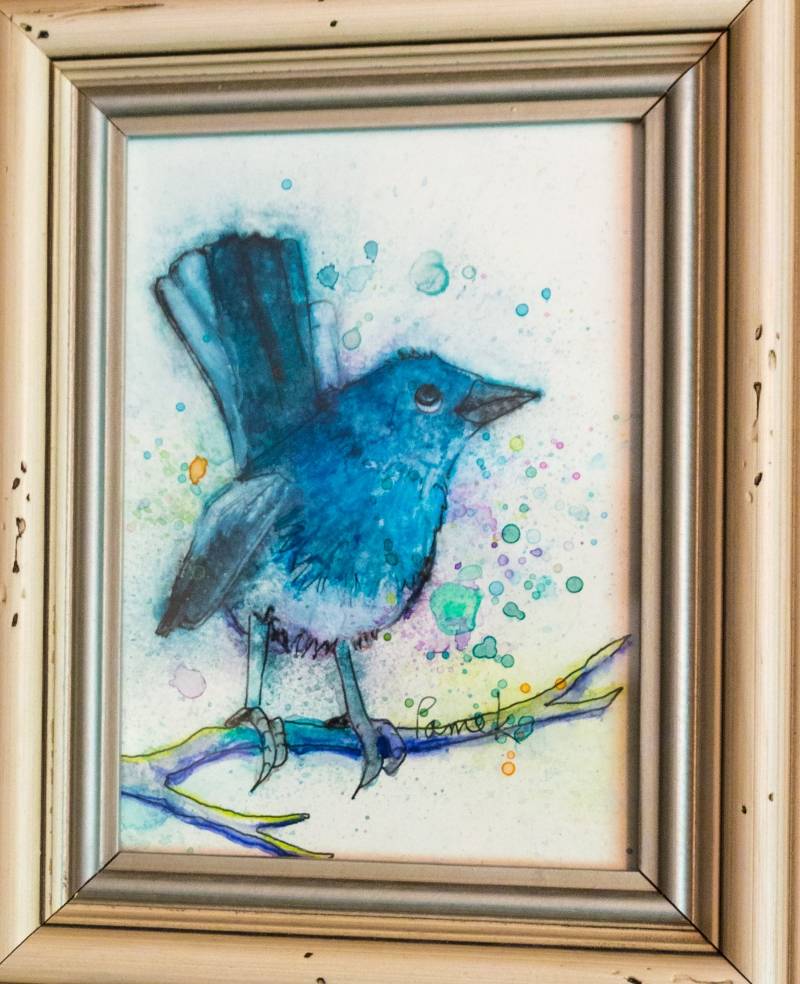
The fish picture (below) is what is called an etching which is made up of printer’s ink and acid burned onto zinc paper. Artists can then make, and number, prints from the etching.
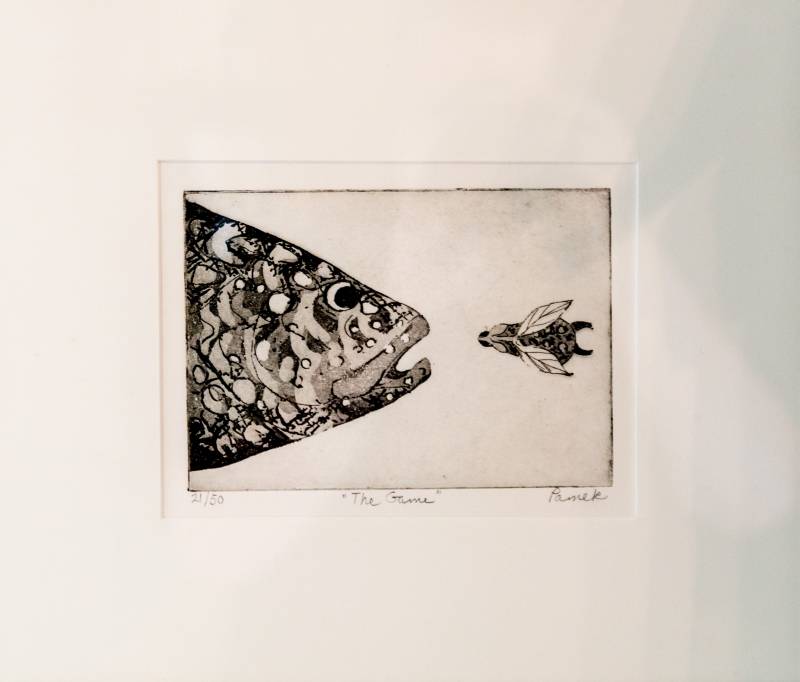
Talking with Ek, I got a sense of her education. The knowledge she has about artistic processes and materials — and even the jargon she used — reminds me that I’ve never been formally educated in art. I am not saying she made me feel ashamed; rather, I am saying it was a healthy reminder of what a formal education in art can instill in one’s mind.
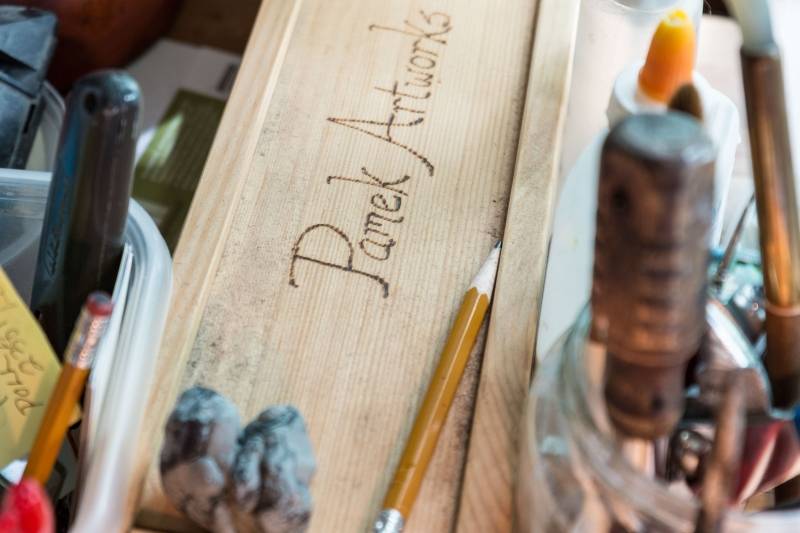
I looked around Ek’s house, where paintings are neatly and deliberatly placed throughout. I looked up close at the frames, glass, and paper. They all looked pristine. I thought, “How could she have moved all of the country and still have these looking so great?” She explained that she uses archival ink and paper and that she always bubble wrapped and boxed everything up when she used to move. “My paintings have gottens smaller over the years because they get very difficult to move” she explained. But don’t think Ek is winding down in her career because of her age. “My mother is 90 and is still indepenedant,” she told me with a smile.
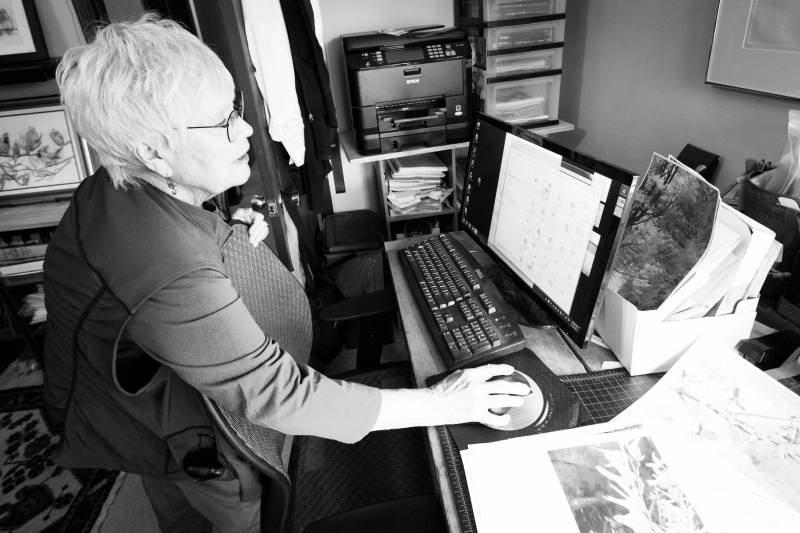
I asked Ek, looking back on her 50 years painting — over the many styles, subjects and mediums — which of them was her favorite. She thought for a moment and replied, “The favorite is always the one I am currently working on. It always is.” On that note I had to wonder, after 50 years, does she ever make a painting that she doesn’t like? One she doesn’t think is up to snuff? “To be honest, very infrequently,” she answered. “I try and let an idea sit in my brain for a long time, sometimes up to a year, before I start to work on it. And if I don’t like it, I just paint over it.”
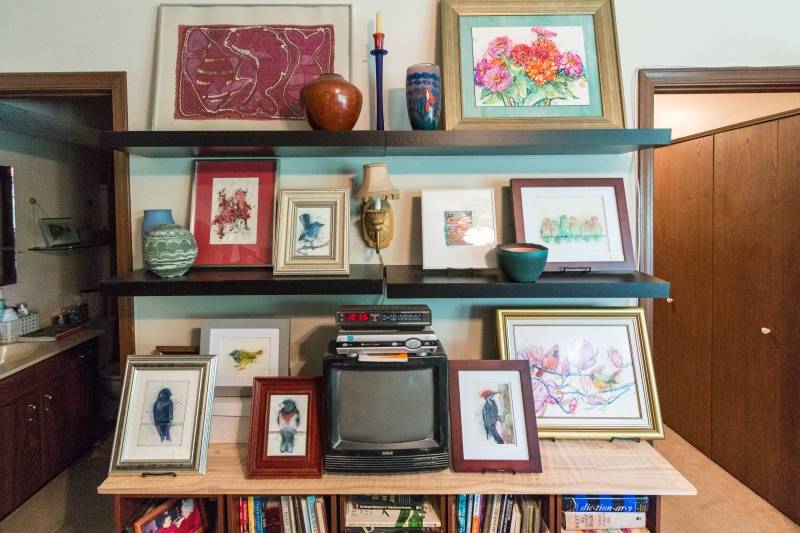
Many young artsts or those who want to pursue a career in art come to the cliff of “Should I do this full time?”
Ek said, “When I first started all I wanted to do was paint and draw. But it is very difficult to make a living off of art alone.” We talked more about her experience with balancing between working a non-art job and keeping her art alive. “I worked retail for 30 years. I’ve worked at interior design shops, for florists, etc. The art background gives you an edge in those industries. And the steady money gives you income so that you can paint.”
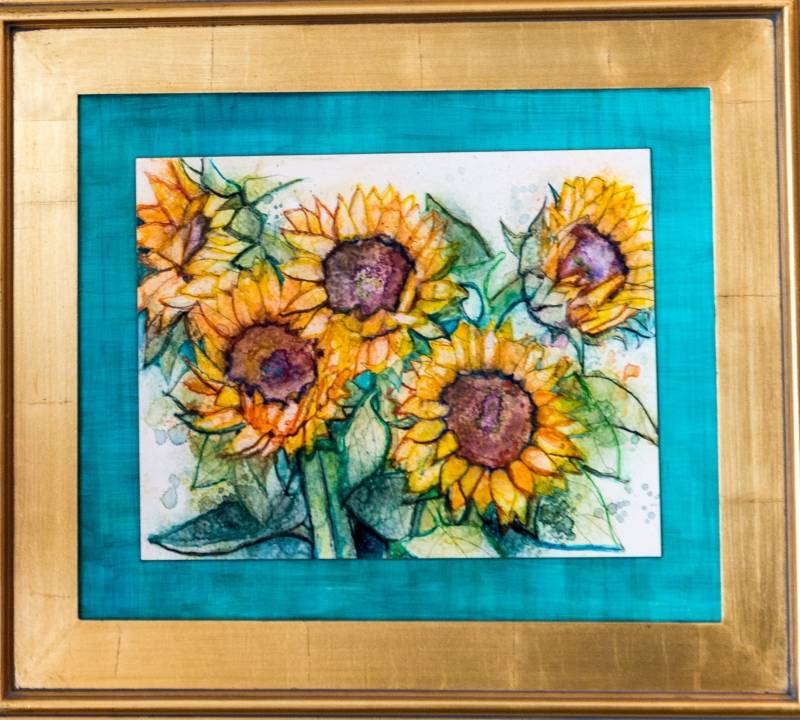
I asked Ek about the state of art in Champaign-Urbana. “I think people are very well educated about art here,” she responded. “I think the university is responsible for that.” But what about all of the doom and gloom I’ve talked about before, regarding how hard it is to sell art in C-U and make a living? Ek says she has been able to make steady earnings in the area. She has been at the Market at the Square for 6 years and her business there has grown. She also goes to Sleepy Creek, has work in the Cinema gallery, and participates in the craft show.
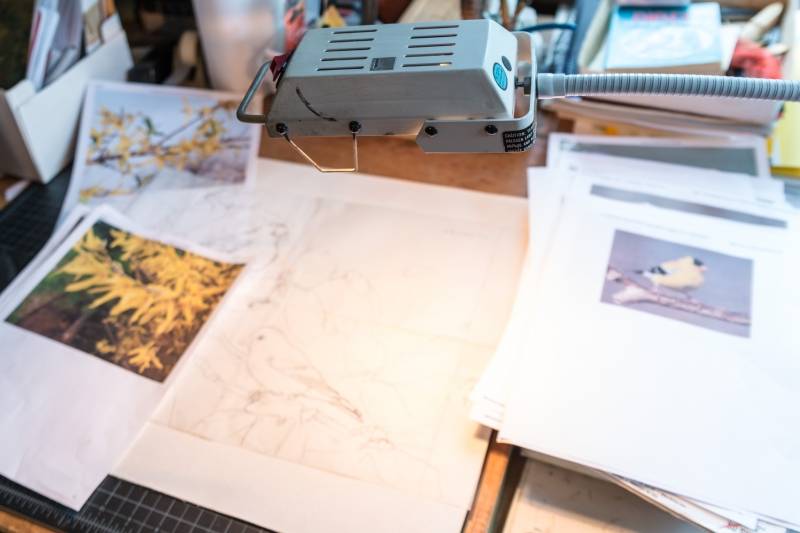
So what is selling for Ek? “My cards are my bread and butter,” she said. “They’re priced so that a lot of people can afford them. The originals go, but slower. But they do go.” I pressed more with Ek about the C-U art scene, and she said, “You have to find your niche of style and business. There are many venues, but you really have to work to find what works for you and the customers.”
I also asked Ek about the galleries in town. “It is sad to see Indi go close its doors,” she said. “But sometimes things just don’t work. And obviously something wasn’t working.” She continued, “I like the Cinema gallery, and one difference between Indi go and Cinema is the curator. Cinema, unlike Indi go, has a full-time curator that picks and chooses the art, so there is a quality standard maintained.”

I asked what C-U could do to improve the art atmosphere. I was hoping for an easy answer like more galleries, more education, or more programs, but she instead apologized and said she couldn’t answer that. “I focus on my craft and the people I work with. Once you get your own thing going, that takes priority in your mind.”
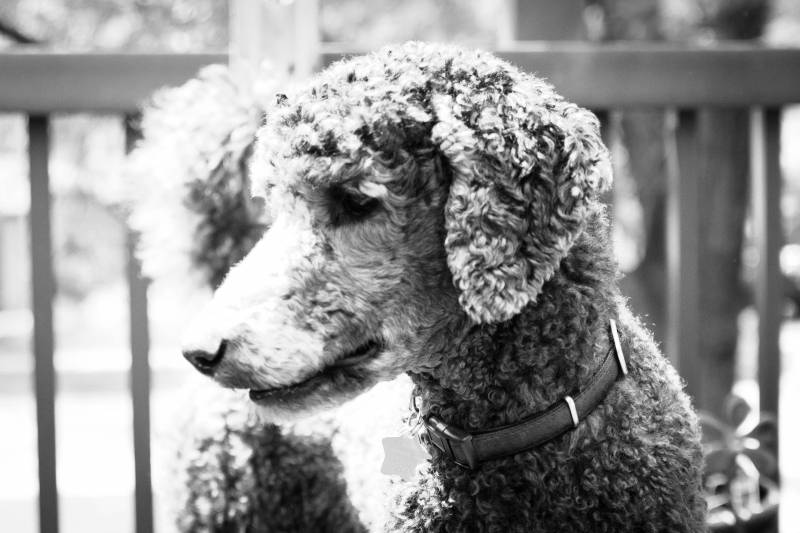
Ek’s interview gave me a different view of artists. She didn’t have suggestions to improve the C-U art atmosphere. She wasn’t mad at the world for having to work retail while she painted on the side. She was tidy, neat, and her studio was well kept. Not to say that artists who do exhibit those characteristics are bad in any way; it’s just that Ek was different. I truly learned a lot about art from Ek and enjoyed my time with her.
Pamela Ek currenlty has work on display until the end of June in Cinema Gallery. She is also at the Market at the Square three weeks a month. She plans to do the Champaign-Urbana craft show in November and the Sleepy Creek show the fourth weekend in September. You can also check her out online by clicking here.








